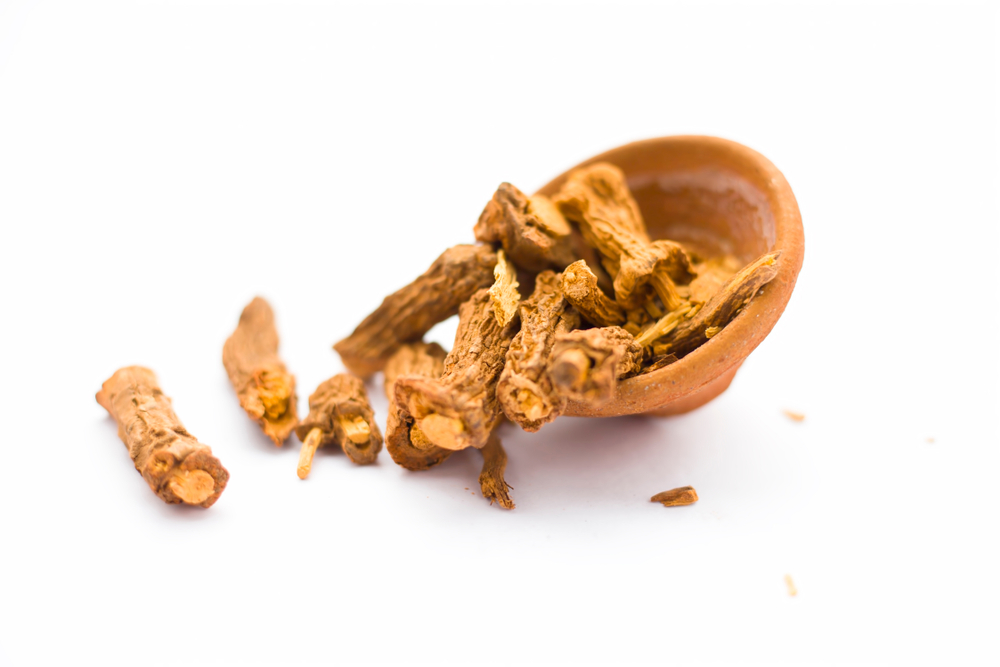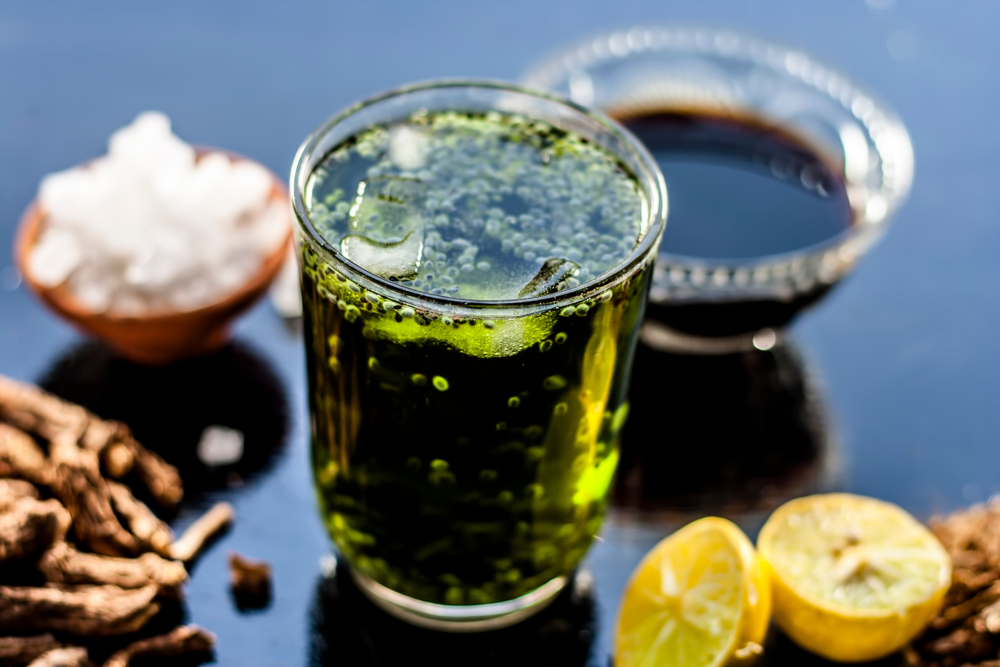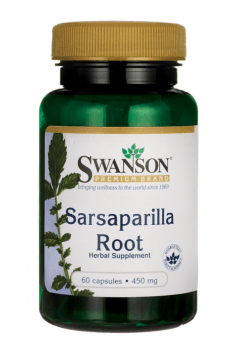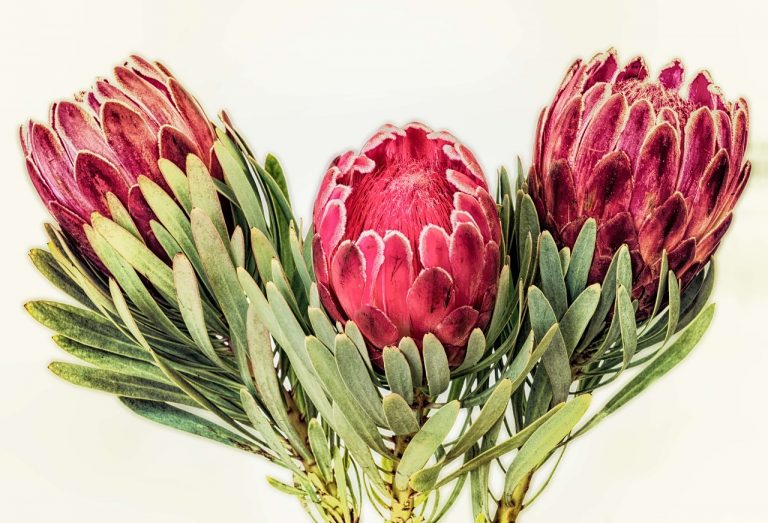There is a certain relatively unknown medicine, which for thousands of years has been used by the indigenous population of Central and Southern America. The experiences of these people prove that it helps to alleviate a range of problems, from skin inflammation, through cough to many other. Starting from the 50s of the 20th century, European doctors started to perceive the root of Sarsaparilla as a product “cleaning blood, diuretic and stimulating sweating”, which may help to treat serious or even life-threatening diseases, such as leprosy or cancer.
Sarsaparilla origin
Currently, the products with Sarsaparilla have many names, dependent on the parts of the plant that were used to produce the product, in what way they are prepared and from which part of the World they come. Other popular names of Sarsaparilla are Smilax, Honduran sarsaparilla, Jamaican sarsaparilla or zarzaparilla. It is no longer used so commonly in the treatment of skin infections caused tropical insects, leprosy or syphilis. Sarsaparilla, however, may be found in herbal preparations used to balance hormones, decrease water retention and improve general immune functions.
Sarsaparilla - basic information
What exactly is Sarsaparilla? Sarsaparilla (the general name which includes the following species: Smilax Ornata, Smilax regelii or Smilax officinalis) is a vine which grows in high temperatures, for example in the Southern USA or Central and Southern America. The plant belongs to Liliaceae vines in the family of plants called Smilacaceae, which encompasses more than 300 various kinds of plants.
Sarsaparilla may grow very high (sometimes even up to eight feet), contains starch, edible roots and produces small berries, which are edible both for humans and animals, especially for birds. Although the roots are today used most often to prepare remedies than berries, fruits and leaves may be used also due to their benefits, effects for health and pleasant, gentle taste. What does Sarsaparilla and its health properties entail? Scientists identified in this plant many active chemical substances, including strong antioxidants as well as anticancer and anti-inflammatory compounds. They include:

Saponins
Anti-inflammatory chemical compounds, which have bitter taste and help to kill fungi, bacteria, cancer cells and harmful microbes. Saponins naturally imitate the activity of certain sex hormones, including testosterone and estrogen. Sarsaparilla contains ca. 2 per cent of steroid saponins, including sarsaponin, smilasaponin (smilacin), sarsaparilloside and smilagenin.
Plant sterols
They were found in many high-fiber vegetable products and it was proven that they bring benefits for maintaining the health of intestines, heart and improvement of digestion. Phytosterols in sarsaparilla include sitosterol, stigmasterol and pollinastano.
Flavonoid antioxidants
Found in colorful fruits and vegetables, such as berries, related to longevity, decreased inflammation, healthy skin, healthy eyes and the improvement of the immune functions. One of the most important flavonoids appearing in sarsaparilla is astilbin.
Other phytochemical, steroid / anti-inflammatory substances
Those include: diosgenin, tigogenin and asperagenin.
Starch
The root contains ca. 50% of starch and after eating, it ensures fiber and other nutrients.
Oils and acids
Sarsaparilla contains shikimic acid, ferulic acid, sarsapic acid, kaempferol and quercetin.
Trace elements
Sarsaparilla contains trace elements, including aluminum, chromium, iron, magnesium, selenium, calcium and zinc.
Health benefits resulting from the application of supplements with Sarsaparilla
Anticancer properties
Some sources prove that there are at least 24 extracts obtained from roots, stems, leaves and fruits of Sarsaparilla, which naturally help to treat or prevent cancer. The majority of pharmacological benefits are attributed to the concentration of natural steroids and saponins, which help to absorb other drugs or herbs, decrease inflammations and have rejuvenating properties.
According to the studies carried our at the University of Queensland in Australia, Sarsaparilla contains at least five steroid saponins, including two recently discovered saponins of furostanol, known as sarsaparilloside B and sarsaparilloside C. It was concluded that these saponins have antiproliferation effect, which helps to kill cancer cells, especially the one that attack the lining of the colon.
Sarsaparilla also contains a lot of other anti-inflammatory, antioxidant acids, oils and chemicals, which decrease oxidative stress and have anti-aging effect. Studies carried out at the University Hospital Cancer Institute in Pekin in China proved that flavonoids, alkaloids and phenylpropanoids were one of the most important bioactive ingredients identified in the wild variety of Sarsaparilla, which induce apoptosis and inhibit the growth of tumors, without damaging healthy cells at the same time.
Protects the liver and has natural diuretic and cleansing properties
Since Sarsaparilla helps in the production of urine and stimulates perspiration, it may be helpful in alleviating the symptoms of water retention, swelling, edema and bloated stomach. Traditional teas from the root of Sarsaparilla were also used to “cleanse blood”, improve the function of the liver and eliminate toxins from the organism.
Research shows that Sarsaparilla may help to improve detoxification by binding with “endotoxins” in the digestive system, which are chemical ingredients stored inside cells (especially bacterial cells), which are released to the bloodstream and contribute to problems, such as liver diseases, psoriasis, fever and inflammation processes. Research proved that Sarsaparilla has hepatoprotective effect (fighting liver damage and liver diseases) due to antioxidants it contains, acids and plant sterols.
The compounds appearing in therapeutic herbs may serve as important therapeutic means to release endotoxins from the organism by making them less absorbable in the intestines. It eventually helps to control the damages of tissues caused by free radicals and inflammatory reactions. Some studies proved that chemical compounds called astilbin (a kind of flavonoids) and smilagenin (a kind of saponins) help to protect liver cells and are helpful in preventing liver diseases, the growth of cancer cells and other problems related to toxicity.

Supports hormonal balance
Smilax Ornata is an ingredient of natural supplements balancing hormones due to its ability to improve libido and potency. Studies suggest that saponins and plant steroids appearing in sarsaparilla may help to imitate the activity of natural sex hormones, including estrogen and testosterone. The plant itself does not contain hormones, but may help to regulate the production of hormones by decreasing inflammation and improving liver function.
Some people even call these saponins “natural steroids” due to their ability to decrease the symptoms of menopause and aging. Other herbal products containing saponins, such as fenugreek, are commonly used in order to decrease the consequences of lowering sex hormones, such as weight gain, muscle mass loss, bone weakness.
Helps to alleviate cough, fever and other symptoms of cold
Tincture, infusions and supplements with Sarsaparilla are used in the treatment of cough, cold and flu in a few ways. First of all, they prevents their occurrence by increasing the immune functions and killing bacteria. They also treat the symptoms by mucolytic and / or antitussive effects. Although the treatment with herbs does not always helps in dealing with serious problems, such as bronchitis or chronic infections of the respiratory system, they are often helpful in decreasing the frequency and / or intensity of cough.
Due to the influence of antioxidant and anti-inflammatory compounds of Sarsaparilla on breaking bonds of mucus and decreasing stickiness of the mucus, phlegm and bacteria may be easier removed from the organism. In case of viruses, which cause stomach problems, Sarsaparilla is sometimes helpful in reducing nausea. It also helps to regulate the work of the intestines.
Naturally treats skin problems

Sarsaparilla is considered an effective and safe folk drug for skin problems, including fungus, eczema, itching, rash and wounds that are hard to heal. Since such disorders as skin rashes, bites and bacterial infections are a common problem in developing and tropical countries, natural herbal preparations serve as important substances preventing complications.
The Clinic of Integrative Medicine and Dermatology in New York indicates that herbal drugs help to treat skin problems in other ways than traditional pharmaceuticals, as they “strengthen the organism contrary to destroying the symptoms of the disease or its causes.” Research carried out in the past proved that Sarsaparilla may help to decrease skin edema, redness, flaking and the creation of spots. In some studies, isolates of flavonoids were identified, obtained from the root of Smilax plants, as active compounds responsible for the immunosuppressive activity and inhibition of activated lymphocytes T, which cause skin inflammation.
Early research from the 40s of the 20th century proved that Sarsaparilla applied topically on skin in psoriasis helped in reducing the strength of symptoms in more than 40% of patients. In one of the studies on the influence of more than 100 plants on the treatment of bacterial infections of skin, it was proven that Sarsaparilla was one of the more effective means in fighting the symptoms of infections with dermatophytes, which often appear in people who live in the third world countries, due to its fungicidal effect.
Summary of the information on Sarsaparilla
Sarsaparilla is a plant coming from the Central and Southern America and it has been used for thousands of years in folk medicine to decrease inflammation, increase immunity and support longevity. Sarsaparilla has been used for long to treat liver diseases, skin infections, cough and cold, sexual disorders and even cancers. Sarsaparilla may be applied in the form of tea, tonic, tincture or capsules. Tea is the most popular way of consumption of many beneficial compounds appearing in the roots of Sarsaparilla.
Sources
http://plants.usda.gov/core/profile?symbol=SMRE2
https://www.drugs.com/npp/sarsaparilla.html
http://www.ncbi.nlm.nih.gov/pubmed/16827159
http://www.ncbi.nlm.nih.gov/pubmed/22285850
http://www.ncbi.nlm.nih.gov/pubmed/25732255
https://www.researchgate.net/publication/232082983_Hepatoprotective_and_Safety_Evaluation_Studies_on_Sarsaparilla
http://www.ncbi.nlm.nih.gov/pubmed/14965237
http://www.ncbi.nlm.nih.gov/pubmed/17996228
http://www.motherearthliving.com/health-and-wellness/inside-plants-herbs-can-mimic-human-hormones-12-herbs-can-mimic-human-hormones.aspx
http://www.ncbi.nlm.nih.gov/pubmed/16428717
https://www.researchgate.net/publication/216500166_Plant_known_as_Sarsaparilla_Herreria_salsaparilha_Mart_Herreriaceae_and_its_medicinal_use_in_southwestern_Mato_Grosso_Brazil
http://www.ncbi.nlm.nih.gov/pubmed/12919112
http://www.ncbi.nlm.nih.gov/pubmed/17272490
http://www.ncbi.nlm.nih.gov/pubmed/2056755
http://www.herbwisdom.com/herb-sasparilla.html
https://en.wikipedia.org/wiki/Smilax_ornata






